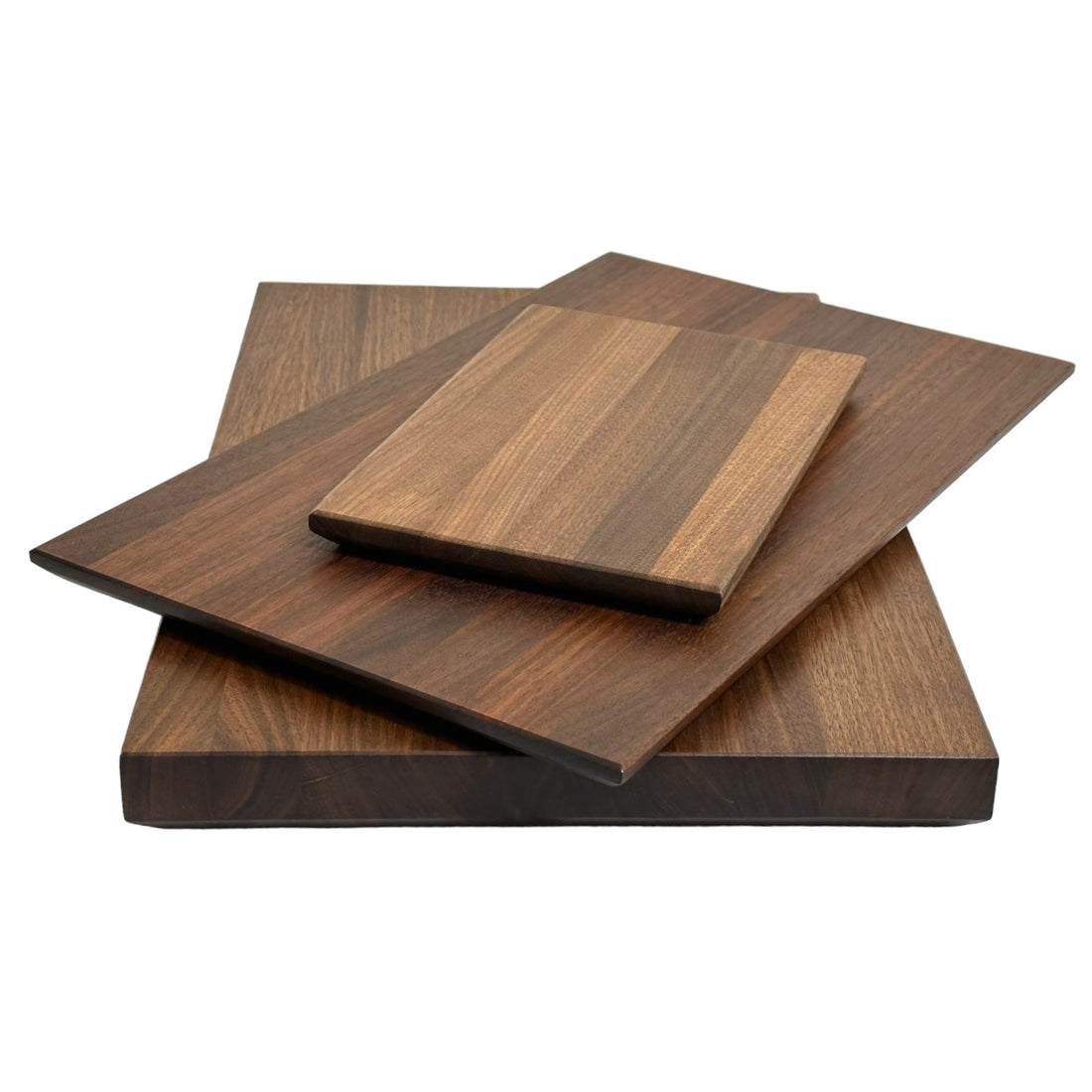If you’ve ever looked closely at a wooden cutting board you’ve probably wondered why is it made from multiple pieces of the same wood instead of just one big slab? That reason has a lot to do with how wood reacts to moisture. If the board was made from a single slab of wood, it’d be a lot more likely to curve and warp.
You see, a piece of wood is a reflection of the living tree it came from. We can cut and machine a piece of wood until it’s perfectly straight and flat, but once it’s exposed to moisture, the natural bends and twists fight really hard to come back and eventually the board starts to warp.
This isn’t an issue with serving trays or charcuterie boards made from single slabs of wood, since they don’t get washed a lot and even if they do warp a little over time, it just adds a bit of rustic charm. Cutting boards on the other hand - you want them to stay as flat as possible for as long as possible. If you had a cutting board made from a single slab of wood and use it and wash it every day, it won’t take long till it starts to warp. Then, you’d have a wobbly and annoying cutting surface.
Our cutting boards are supposed to make your meal prep pleasant and enjoyable, not wobbly and annoying.
So when we build a cutting board, we take a large slab of wood and cut it into smaller strips. Then, we rearrange those strips and alternate the direction of the wood grain to compensate for the natural wood movement. When the strips are joined together, the end result is a beautiful board that is much more resistant to the effects of moisture.
Proper care and washing methods are still incredibly important, but when you start off with a well-made and intentionally designed board, it’s going to last for a very long time.
Hopefully this helps you understand some of the science behind our cutting boards. If you ever have any questions, we’re here to help!


